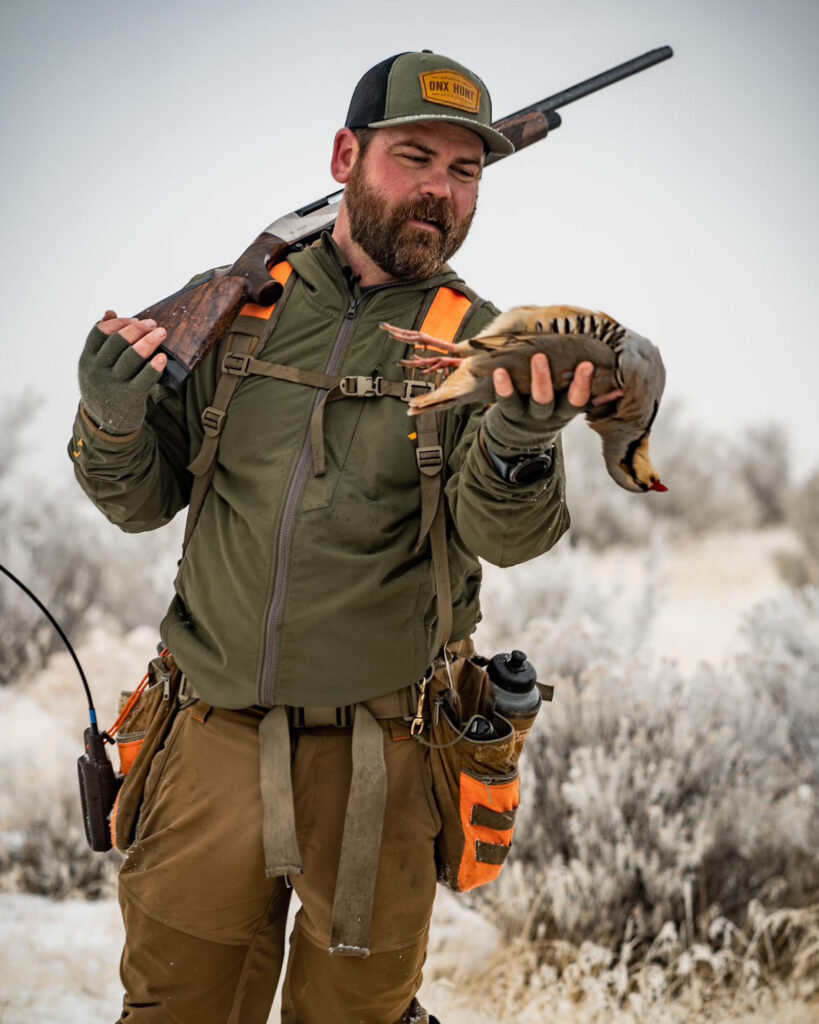How to Get Started in Bird Dog Field Trials
Story & Photos By Ben Brettingen
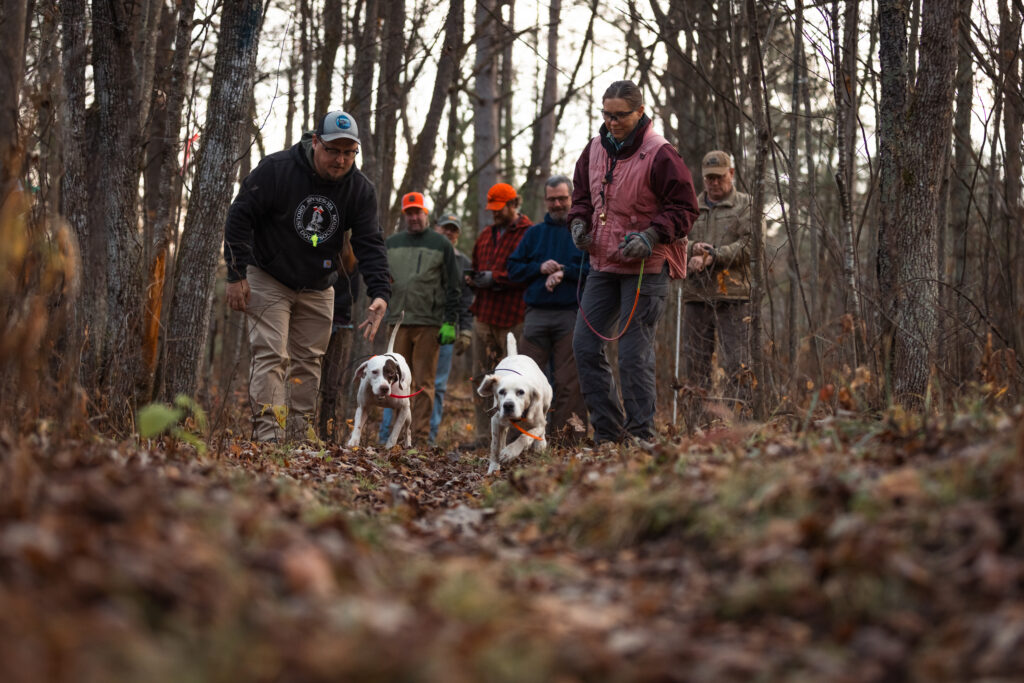
If you asked me 10 years ago what I thought of pointing dog field trials, I would’ve rattled off some vague image of galloping horses, runaway pointers disappearing over the horizon, and a line of trailers worth more than the average mortgage. It looked like a world meant for professionals with dogs on their string owned by wealthy backers—not a place for someone like me. That image kept me from diving in, even though I’ve always had a deep fascination with the world of field trials.
But something changed when I brought home Amos, a young pointer pup. I’d trained and tested versatile dogs through JGHV (Jagdgebrauchshundverein) before, but pointing dog field trials always felt like an intimidating leap. That is, until I came across an Instagram account run by a guy named Kyle, who was involved in Cover Dog trials—walking stakes run on wild grouse and woodcock. No horses. No big rigs. Just handlers and working dense cover on foot. Suddenly, trialing felt approachable.
Before Amos had even been whelped, I decided to go watch a spring trial hosted by the Minnesota Grouse Dog Association. I half expected a row of living-quarter trailers and standoffish pros, but what I found couldn’t have been more different. It was just regular bird hunters—guys with muddy boots and dog boxes in the beds of their pickups. They were welcoming, too. That day flipped a switch. I saw something special in that community and in the way those dogs worked.
Trial By Fire
Fast forward to that fall, and I’d decided to run Amos in his first trial. He was just eight months old and entered the “Derby stake”—a class for young dogs generally under two-and-a-half years old—held by the Moose River Grouse Dog Club. I had no idea what I was doing. Thankfully, Kyle helped me through the entry process, and I showed up with a mix of excitement and anxiety. The club was in the middle of nowhere, with no cell service and no GPS pins to rely on. That only added to the nerves. It was my first time handling a dog without an e-collar, and the idea of losing him in the woods weighed heavily.
The course was 30 minutes long, weaving through classic grouse cover—young aspen, swamps, and young pines. Derby dogs aren’t required to be steady to flush or shot; judges are mainly looking for potential to become a good shooting dog. Can the dog hunt independently but in tune with the handler? Is it forward-moving and hitting likely cover are all considerations for judges. About halfway through, I realized Amos hadn’t gotten lost. He was checking in, casting forward, and making it look like we actually knew what was going on. Then his bell went silent. I walked up to find him locked on point, facing into a blowdown. Seconds later, a grouse blew out, I fired a borrowed blank pistol, and we finished out the brace.
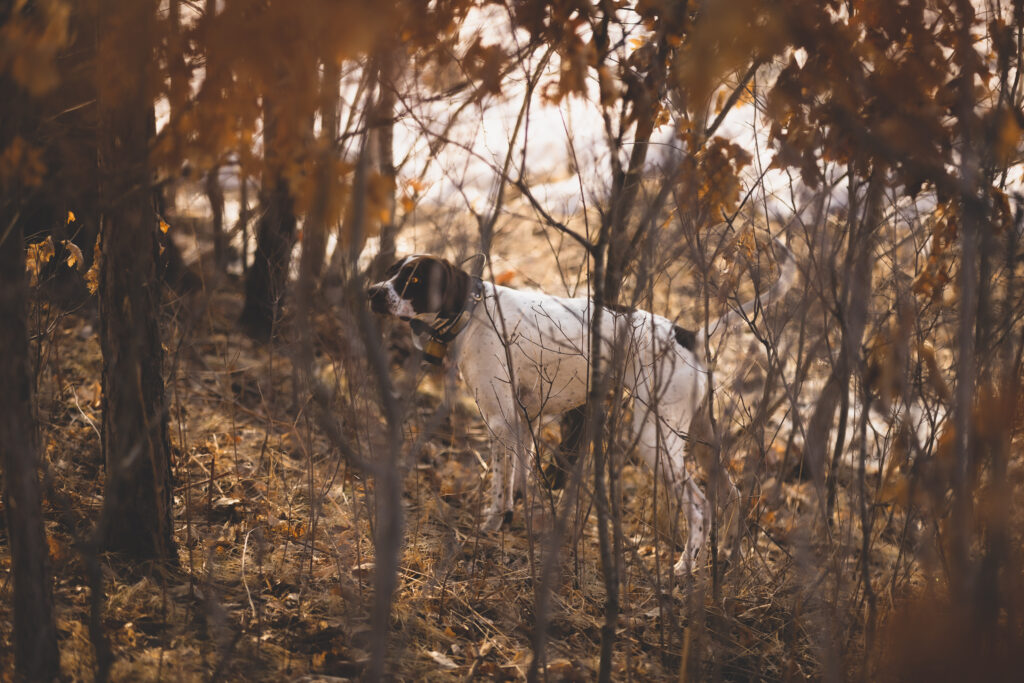
I thanked the judges, shook Kyle’s hand, and figured I’d hunt my way home. That’s when Kyle looked at me and said, “You might want to stick around for announcements.” I was floored when Amos took third. That white ribbon poured gas on a fire I didn’t know had been lit. From that point on, I was hooked.
The Basics of Bird Dog Field Trials
If you’re a hunter and have ever thought about field trialing—or even if you haven’t—you might be surprised at how much it can add to your experience with your dog. But like me, you probably have a ton of questions. So here’s what I’ve learned so far: how to get started, what to expect, and why this intimidating world is far more accessible than it appears.
To begin, it helps to understand what a pointing dog field trial actually is. Most of the trials you’ll encounter in the U.S. fall under the United Kennel Club’s (UKC) “American Field” program. Trials are structured competitions designed to evaluate a dog’s natural hunting ability and training. Unlike testing systems that score dogs against a fixed standard, field trials are competitive—dogs are judged against each other, and only a few will place.
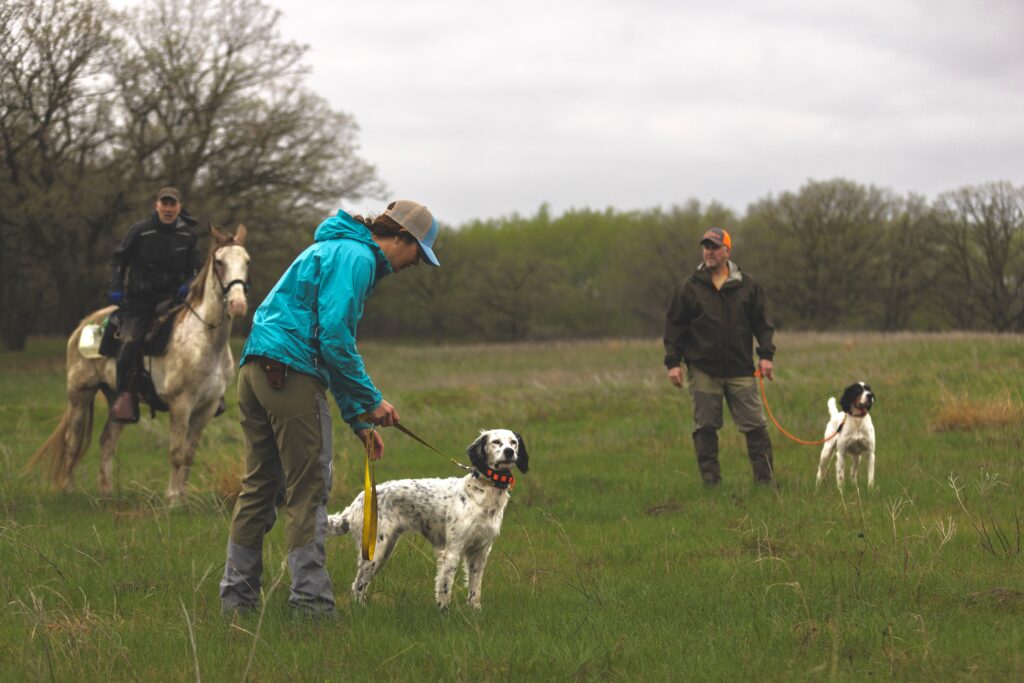
Dogs run in braces—two at a time—on a set course, usually ranging from 20 minutes to an hour, depending on the stake. Courses are held on wild birds when available, or liberated birds. The “stakes” or classes are Puppy, Derby, Shooting Dog, Gun Dog, or All-Age. Puppy stakes are for dogs under 15 months and judged mostly on enthusiasm and potential. Derby dogs, like Amos at the time, are judged on their forward race, independence, and how they handle the terrain. Broke dog stakes like Shooting Dog or All-Age require steadiness to wing and shot, and a higher level of polish. Gun Dog stakes are for dogs of any age, and similar to a derby, the judgement ceases at the flush. The difference between the two main stakes, All-Age and Shooting Dog lies mostly in range and independence—All-Age dogs run bigger and are expected to be more independent.
You’ll see a wide variety of breeds at these events. Pointers and setters dominate, but Brittanys, German shorthairs, vizslas, and other versatile breeds will be seen occasionally. Many of those breeds such as Brittanys and vizslas even have their own dedicated trial circuits.

School Is In Session
One of the first things I had to learn was how to tell the difference between walking and horseback trials. That part isn’t always obvious. A good rule of thumb: If the announcement includes All-Age stakes, it’s probably a horseback event. If it’s part of the Cover Dog circuit, NBHA (National Bird Hunters Association), or U.S. Complete Shooting Dog Association, you’ll be on foot. Walking trials are generally easier to get started in—no horse needed, and the logistics are simpler.
It would be my recommendation to attend a trial as a spectator first. At most events, there’s a gallery that walks behind the handlers, judges, and reporter, observing the action as it unfolds. This is a great opportunity to watch braces, learn how the trial operates, and get a feel for what’s expected—without the pressure of running your own dog. Be mindful, especially in Cover Dog trials, where handlers and judges are listening intently for the dog’s bell. Stay quiet, hang back, and observe. It’s also the perfect setting to ask questions—quietly and respectfully—as folks in the gallery are usually more than happy to explain things to a newcomer. Watching a trial first builds a foundational understanding of how everything works and helps connect you with people, which makes a huge difference once you’re ready to step into the arena. Just having a friendly face around when you’re getting started can take the edge off the nerves.
Getting Started
So how do you find a trial? Your best bet is to start with the American Field website or reach out to your local pointing dog club. Social media can help, too—many regional clubs post trial dates and entry info on Facebook or Instagram. When in doubt, don’t be afraid to message someone directly. Most people in this community are happy to help, especially if you’re just getting started.
What do you need to compete? First, your dog will need to be registered with UKC or American Field through the Field Dog Stud Book. Second, you’ll need a tracking-only collar—this means a unit that cannot tone, vibrate, or stim. Most people run Garmin T5 or T20 collars, which are legal in trials. If you don’t have one, don’t stress—someone will almost always loan one to a first-timer. You’ll also need a blank pistol, proper footwear, and of course a bird dog. That’s about it!
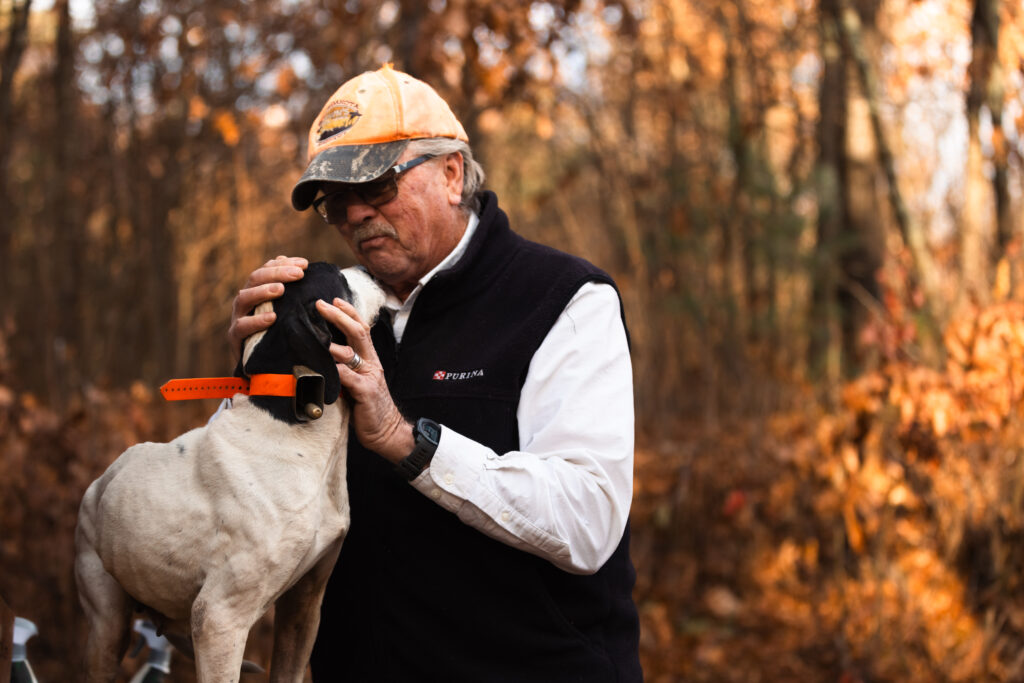
The Benefits of Bird Dog Field Trials
Trialing has made me a better trainer, handler, and hunter. It brings structure to the off-season. Trials happen in early spring and fall, which means I have firm goals and deadlines to work toward. I know when my dog needs to be conditioned and tuned up, which helps avoid the kind of training procrastination we’re all guilty of when no one else is watching. Trialing also builds community. I’ve met people through trials who’ve become close friends and hunting partners. These are folks who live and breathe bird dogs and learning from them has been invaluable.
It’s also an incredible way to evaluate other dogs and bloodlines. In a single weekend, I’ll see more dogs run than I would in an entire hunting season. And these aren’t just average dogs. They are the cream of the crop that have been carefully bred and developed. If you’re looking for a pup, attending trials is a fantastic way to see the finished product, and be able to compare what attributes you like in a line.
Since starting out, I’ve added another dog to my string—an English setter named Fred, who is currently a spring Derby. Fred was bred for the woods, and working with him has been a different experience from training Amos. Developing a dog for trials has taught me more than I ever imagined—about patience, pressure, and reading a dog in the moment. Fred had a great puppy season, including a first-place finish and a solid showing at the Grand National Grouse Futurity last fall.
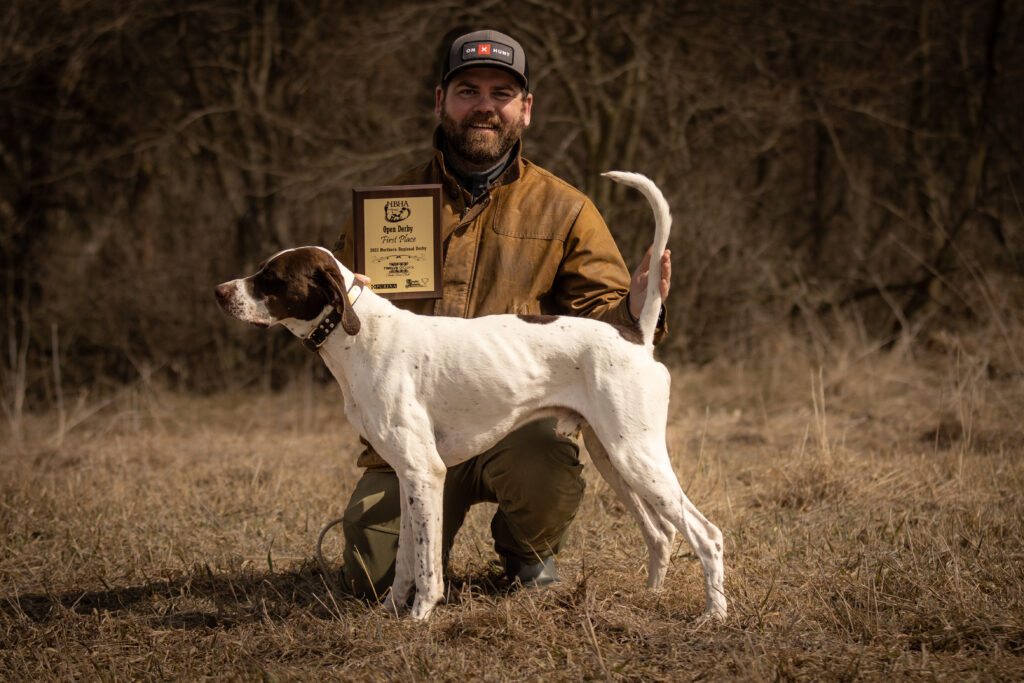
Amos, now older and wiser, has transitioned into a Shooting Dog. That jump from Derby isn’t easy—you’re suddenly running against veteran dogs in their prime. But with each day in the field, Amos continues to refine his skills, and he even placed third in his first season as a Shooting Dog.
Over time, my role in the sport has expanded. I’ve had the opportunity to judge Puppy, Derby, and Shooting Dog stakes, and I can confidently say that judging is one of the best ways to sharpen your eye and grow as a handler. You get to see dozens of dogs, each with their own style, strengths, and shortcomings. It’s helped me understand what judges key in on, and where I need to improve as a handler. Just as importantly, it’s deepened my appreciation for the dogs, the people, and the game itself.
At the end of the day, the best reason to get into trialing isn’t ribbons or bragging rights—it’s the time you spend with your dog and the people you meet along the way. If you’re just getting started with a pointing dog, or you’ve had them your whole life, field trialing adds a new dimension to the experience. It pushes you to be better, gives your dog new opportunities to grow, and plugs you into a passionate community that lives for bird dogs.
So if you’re sitting on the fence wondering if field trialing is “your thing,” I’d say take the leap. Go watch a local trial. Ask questions. Show up with a curious mind and a dog that loves to hunt. That’s all you need. Everything else, you’ll learn along the way.
